Technology is morphing our world with its influences permeating through every corner; the visual arts are no exception. Many practices, such as shopping and socializing, have been digitalized for convenience and accessibility; however, are digital alternatives to traditionally in-person operations a perfect substitute? In light of COVID-19, many galleries and auction houses have turned to technology to continue exhibiting their art and curve social distancing measures. Nonetheless, will this momentary change lead to a complete shift in how art will be displayed in the future? Will there still be a need for galleries or art fairs in the future?
Virtual means of art consumption and appreciation have been created as a substitute for in-person galleries and art fairs but fail to compensate for a holistic real-life experience. Therefore, there most definitely is still a need for conventional real-life galleries and art fairs in the future. Galleries, art fairs and other in-person means of exhibiting art for the naked eye to see are indispensable to the culture and practice of art viewing.
Technology and Virtualization: What have they enabled for the art world?
Virtual exhibitions have existed long before COVID-19 prompted the digitalization of many, usually, in-person events. One of the first computerized exhibitions actually dates back to 1993 with the CD-ROM-based Microsoft Art Gallery. They were used by galleries and museums to display their collections digitally to provide wider access and attract more “visitors.” Audio guides that accompany the tour were often included, narrating the artworks on the screen. Virtual exhibitions now take numerous forms: some as simple as a slideshow, some as advanced as a Google-Maps-esque navigation.
Technology permits personalized content, bolstering the holistic user experience by permitting interactivity with the exhibitions; thus, it compensates for features physical galleries may lack. Filters can be set by viewers to tailor the exhibit to their preference, omitting artworks that are not of interest. Methods can also be identified to better the visitor experience for their exhibits and art fairs by analyzing data collected from users. This can be done through directly asking for feedback or analyzing user behavior, such as which artworks visitors may swiftly click past or which artworks they may linger on for longer. Through data analytics, galleries can determine which types of artworks are more popular or less favored.
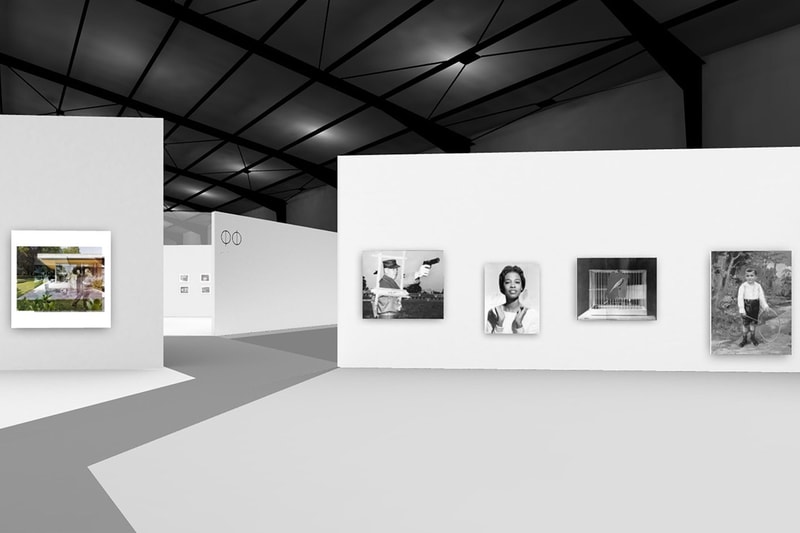
Photo Basel
Retracting from virtualization, a notable product of digitalization, social media, has also been well-adopted into the visual arts. Asia Chiao, an Associate Specialist for Modern and Contemporary Art at Christie’s Hong Kong, remarks that Instagram has become progressively relevant to the art world. Consequently, artists whose works translate well digitally have become more popular. She continued to share that “Instagram has also made it easier for collectors to discover and connect with younger artists.”
Physical galleries often run into the problem of space: they may not have enough vacancies available for the desired number of artworks or they may not have an exhibition space for a long duration. Virtual galleries afford the opportunity to exhibit artworks that are not physically on view. Older exhibits can be virtualized for collectors to revisit them digitally and virtual galleries can also act as an extension to physical galleries to include artworks that couldn’t be exhibited live. This is especially relevant to digital artworks since they display better digitally. And in the case of invitation-only auctions, virtualizations permits broader inclusivity and accessibility. The virtual versions of live exhibits could also be used as a component to market the physical exhibitions, to garner attention and earn publicity.
Despite the aforementioned propositions, the main reason in favor of virtual galleries, more current than ever, would be its ability to provide a virtual alternative to its live counterparts.
As COVID-19 put a halt to numerous physical gatherings and events worldwide, heavily-anticipated art fair – Art Basel – and renowned auction houses, Christie’s and Sotheby’s, have virtualized their events in efforts to continue promoting the consumption of art, for view and for purchase. Specifically, Christie’s has increased their volume of online-only sales to compensate for the decrease in live auctions due to social-distancing and safety measures. One of their largest auctions of the year, “ONE: A Global Sale of the 20th Century,” was live-streamed online across four of the world’s major art hubs – Hong Kong, Paris, London and New York – reaching over 100,000 viewers globally. An entirely digital sales catalogue accompanied the auction, allowing viewers to virtually explore the exhibitions online. Chiao discloses that Christie’s has offered 26 more online sales as of July 2020 versus last year, with a 34 percent increase in the number of lots offered. In recent months, they have also recorded over 13 million unique visitors to their website with a 32 percent increase in online traffic to editorial content, digital features and stories.
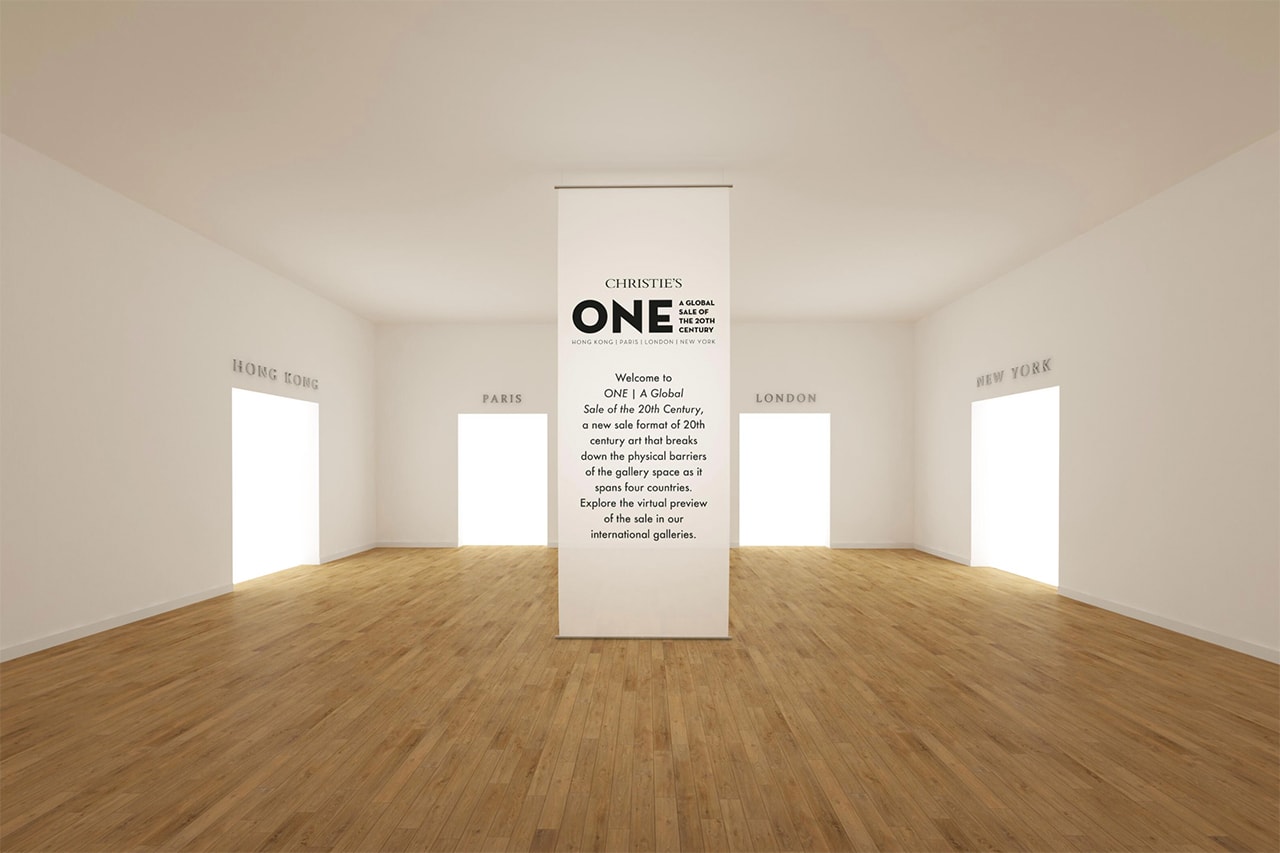
Christie’s ONE: A Global Sale of the 20th Century.Christie’s
Galleries have been experiencing staggering boosts in web traffic. Notably, the Courtauld Gallery with a 723 percent increase in online visitors in mid-March. The pandemic should undoubtedly be credited for these outcomes as social distancing has provided people with more time, but not many places to go. With the abundance of free time and alleviation from momentary stressors, people long for social spaces and become reminded those they were once too busy to visit. And now, virtual galleries are filling in this void as a stand-in.
In an ideal world absent of COVID-19, virtual exhibitions permit convenient access to exhibitions and sale catalogues, reaching existing art lovers and collectors and attracting new ones. Through alternate means of art viewing, collectors can view exhibits from all around the world without traveling and new collector may feel less intimidated to dip their toes in the exclusive art world. In fact, Chiao reveals that the art world had already been moving towards digital solutions before COVID-19, so she expects this trend to persist beyond the pandemic.
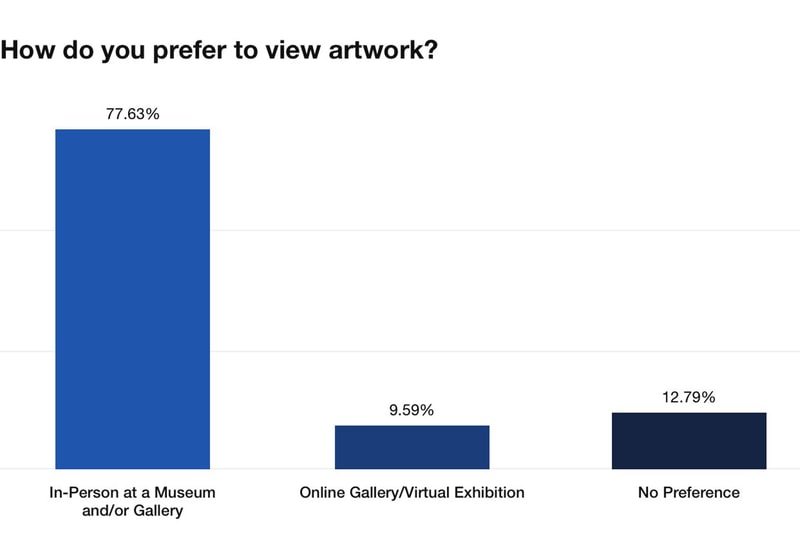
Powered by Hypemind
Moreover, a survey conducted on our website found that 9.59 percent of respondents prefer to view artwork through an online gallery or virtual exhibition and 8.68 percent shared they are not likely to visit a gallery in person if an online exhibit is available. However, most (69.8 percent) respondents answered that they did not check out any virtual galleries or art fairs online during the pandemic, while 7.19 percent and 10.5 percent of that group said they prefer online galleries and are not likely to visit a gallery in person if an online one is available, respectively. Interestingly, only 3.27 percent of that 69.8 percent prefer online galleries and are not likely to visit a gallery in person if an online exhibit is available. Therefore, even though people have a preference for virtual means of art viewing, they may not actually act upon it and indulge in such practices. Ultimately, viewing art in person reigns superior, further proving that online art viewing is unpopular in comparison to in-person. It is fair to conclude that in-person galleries and art fairs are irreplaceable.
Reluctance and Acceptance towards Virtual Technologies in Art: Are Virtual Exhibitions Here To Stay?
The pandemic has illuminated the merits of online viewing rooms and live-streamed auctions. Chiao shares that “even when live events and exhibitions resume, their digital counterparts will remain extremely important.” As the global collecting community has grown more tech-savvy by the day, she is glad that the art world has now been pressured to embrace cutting-edge technology. In-person exhibitions will always be essential and galleries are swiftly developing new technologies to emulate the physical experience in a virtual setting. Christie’s has already commenced the use of entirely virtual spaces for displaying art. In the case of the “ONE: A Global Sale of the 20th Century” auction, the Hong Kong segment was completely virtual; the artworks were never bodily hung up but were actually keyed in.
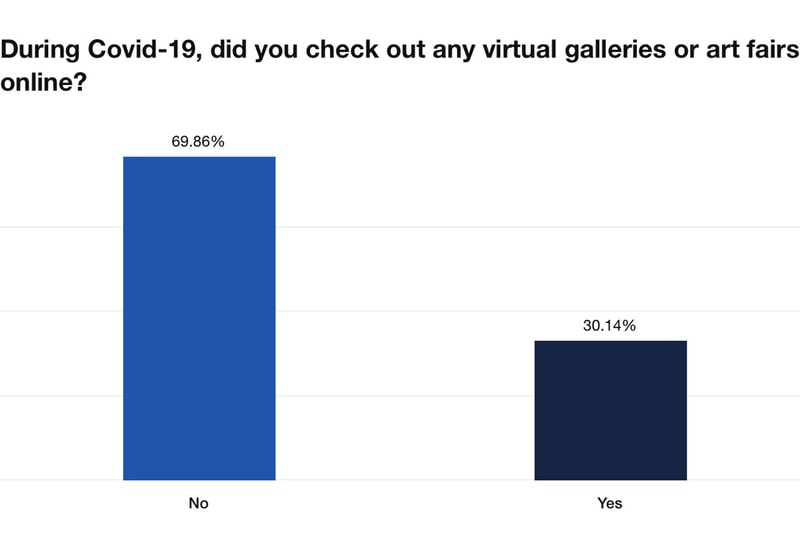
Powered by Hypemind
Chiao expresses that collectors nowadays are “increasingly willing to purchase artwork sight-unseen” and Christie’s has observed a “strong willingness” among their clientele to browse and buy virtually. The art market is also becoming progressively international, prompting collects to buy from all around the world. And sometimes, “it’s simply not feasible to see an artwork in person before having to make a decision.” So, in these cases, virtual technologies undoubtedly aid to overcome such hurdles.
According to Chiao, Christie’s has noticed their top collectors taking more interest in their online sales this year. Although, a cause of that may be the enforcement of stay-at-home measures.
Furthermore, Chiao disclosed that Christie’s definitely has plans to capitalize on such features as virtual tech allows them to accommodate innovative display opportunities that may not be feasible in real life.
She also revealed that even preceding the COVID-19 outbreak, many of Christie’s top lots were sold to collectors who were unable to visit the artworks in person. However, some collectors have also shown reluctancy to buying before in-person viewing as they are now less inclined to bid aggressively. Overall, these variables differ for depending on the client, the region, and how familiar with collecting the client is.
The Problem with Virtualization
Convenience and accessibility are the main motivations for virtual galleries, but practically speaking, these factors are not incredibly convincing.
Art lovers span from all ages and economic backgrounds, however, art collectors are usually those who have the capacity to spend relatively large sums of money on artworks and have the time to enjoy art enough for it to be a hobby. Collectors are affluent enough for accessibility and inclusivity to not be significant factors while buying art. Even artworks labelled as “affordable” at the Hong Kong Affordable Art Fair range from $1000 to $100,000 HKD, inferring that collectors must have a considerable amount of disposable income. Collectors also often travel in the name of art; in 2019, an estimated 88,000 visitors attended Art Basel Hong Kong where a substantial amount was expected to be collectors flying in from overseas. Virtual exhibitions are currently a practice predominantly undertaken by museums rather than galleries and art fairs because, comparatively, it is more worthwhile for museums to engineer a full exhibit for their permanent collections. Contrarily, galleries and art fairs display artwork with the intention to sell, so the artworks should ideally not be on view for as extended periods of time. It isn’t efficient for galleries to constantly update their exhibits in comparison to museums. With the exception of large-scale art fairs, smaller galleries and art fairs may not have the resources to constantly update their virtual exhibitions.
The element of exclusivity is an influential factor in art fairs. Certain small exhibits, and even sizable ones, such as ARCOmadrid and Art Basel, have invitation-only private viewing times prior to public days where an entry fee is needed. Applying this concept online, an invitation can take the form of a special link, passcode or e-ticket to gain access to the virtual showroom. Physically, visitors would be paying for the holistic, immersive art experience of walking through a curated space. However, virtually, their experience could be compared to simply clicking through Google Maps. Exclusivity is one of the factors that sustain the scarcity, eminence as well as price of art, and ultimately, the underlying order of the art market.
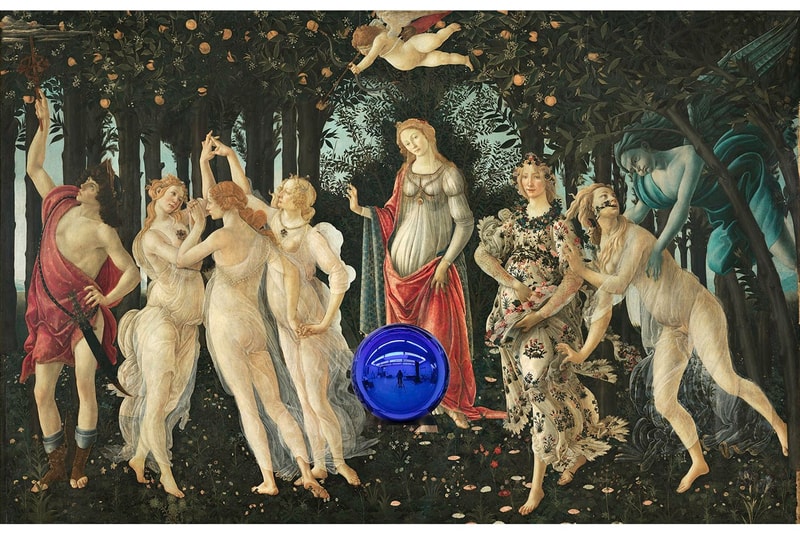
David Zwirner
If the virtual galleries were to be free of charge, wide access may sentimentally and monetarily devalue the artwork as it diminishes the works’ exclusivity and make the artwork available to people who don’t truly appreciate art. But if they weren’t free, restricted access may devalue the works by not allowing the artists’ and curators’ efforts receive their optimum exposure. It may deter potential visitors who think that it may not be worth it to pay for what comes down to a mere link.
The most considerable shortcoming of virtual exhibits is that they are all essentially two-dimensional images. Existing virtual exhibits are all based on the physical gallery itself and are at best captured by a 360-degree camera. However, this is often only the case for galleries curated by large entities, such as The British Museum, who have the resources to construct sophisticated virtual exhibits. Something of a slideshow is usually expected from medium to small galleries. Software like Exhibita or Tilt Brush can be used to create an explorable space – a genuine virtual showroom – but the limitation of resources and whether or not such efforts are worthwhile for short-term and small-scaled exhibits come into question. Practically speaking, the best a visitor can entertain advanced virtual technologies is to have VR glasses that accommodate to 360º tours; however, VR glasses are not a household item. What is accessible to the average visitor would realistically be whatever they can view on a computer screen. Thus, exhibits would be displayed as single-planed images, lacking the crucial sense of depth and space that would be experienced in person. The aforementioned problem would be even more apparent for performance, installation and sculptural art.
Significance of In-person Art Viewing
At the basis of consumerism is the decision-making leading up to a purchase. Referring back to the comparison of virtual galleries to online retail, the differences between online and in-store shopping experiences is also applicable to this discussion.
Although online shopping has become wildly popular in recent years, studies have shown that the majority of online consumers practice showrooming, the act of visiting stores to see a product in person before ordering it online. It has also been found that consumers typically spend more money when shopping in stores as supposed to online. Such behavior illuminates the importance of seeing products physically before purchase, and the same goes for art; people may prefer the physical experience of art viewing as well as viewing an artwork live before purchase. In fact, our survey found that most (67.12 percent) respondents are likely or very likely to visit a gallery in person if they have an exhibit online. Also, 68.9 percent expressed that seeing an artwork in real life ahead of purchasing is somewhat to very important.
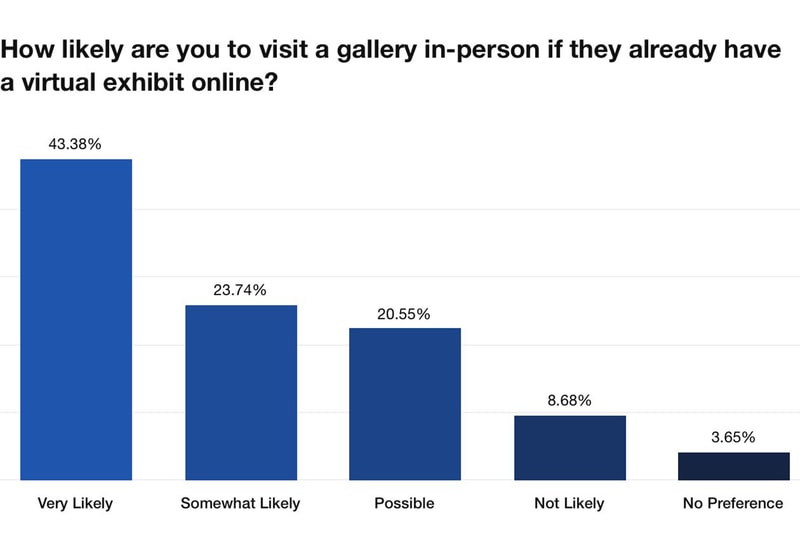
Powered by Hypemind
Nowadays, websites like Artsy and Artnet, although initially established as e-commerce platforms for art, are instead typically used by collectors to discover artworks and connect with sellers and artists; the latter process of viewing is continued offline. Viewing an artwork through a screen may also create false impressions of the artwork concerning elements, such as its scale, colors or texture. However, these fallacies cannot be fully corrected until a collector is able to view the art in person.
Our survey revealed that 9.59 percent of respondents who said they prefer online galleries or virtual exhibits. But on the other hand, over half (57.1 percent) believe it is somewhat or very important to view an artwork in real life prior to purchasing it. Moreover, 14.3 percent were neutral and 42.9 percent think it is somewhat not to not important. Thus, although people may prefer viewing art online, it may be a different deal when it comes to purchasing a piece of art. Overall, this substantiates the importance of viewing artwork in person ahead of buying.
A foundational element of art is its interaction with its creator during production and with the viewer during appreciation. Art is made for the naked eye to observe directly and physically and to foster an intimate artwork-to-human connection – not through a screen.

Powered by Hypemind
Galleries and art fairs are curated with the intention of showcasing art to entice collectors to buy them. However, the primary objective in all cases is to reveal a collection coherently in a manner that best reflects how the art should be interpreted and represented. The viewers’ interaction with and navigation through the space is taken into account in the process of curation. The different angles an artwork would be viewed from and how the strategic placement of artworks would guide the viewers’ sentiments and thoughts are few among many key considerations to take into account while curating an exhibition. Spatial context is what defines the superiority of live galleries and art fairs to virtual ones because space is needed to create an immersive atmospheric experience.
Moreover, Chiao reveals that any exhibition should construct a dialogue “for one artwork to visually illuminate something about another.” She believes that “when a visitor walks through a space, there should be a flow – the curator should be conscious of how everything works together.”
The act of clicking through a series of images does not induce an immersive experience. The virtual experience is comparable to online shopping where deep-thought fails to be provoked and the activity is monotonous and uninspiring. Chiao also remarks that art viewed on a screen “lacks the sense of scale imparted when seeing a work in person,” while “textures and surface qualities also don’t translate well digitally.” Also, image-based virtual exhibits can only showcase artworks at one constant eye-level, failing to accommodate to a natural and organic point-of-view. Even with more advance virtual galleries of Google-Maps-like configurations, the viewers’ path is pre-routed, limiting their ability to freely explore and navigate the art space and engage with the art. Chiao disclosed that Christie’s has also faced challenges with emulating colors and fine details precisely through VR. She finds that, contrarily, “the “low-tech” option of taking lots of in-situ images and simple videos is more helpful than fancy virtual viewing technology.” Furthermore, in the case of auctions, Chiao stresses that live-streamed auctions fail to replicate the “drama and thrill” of participating in a live auction and high-value masterpieces will continue to be sold at live events.
Beyond the artworks themselves, the culture of art viewing bears social values as well. Art viewing is also an action, a hobby, an event, where people gather and bond over their favorite artworks and artists. Physically visiting exhibitions and looking at art has become a culture that unites people. Clicking and swiping around a screen simply does not suffice.
Discounting collectors who buy art solely for investment or monetary-related motivations, the monetary consumption of art always begins with a genuine appreciation for the work. The artwork needs to invoke enough emotion in the collector to induce a desire to purchase it, and the initial attraction between a collector and an artwork is best formed in person.
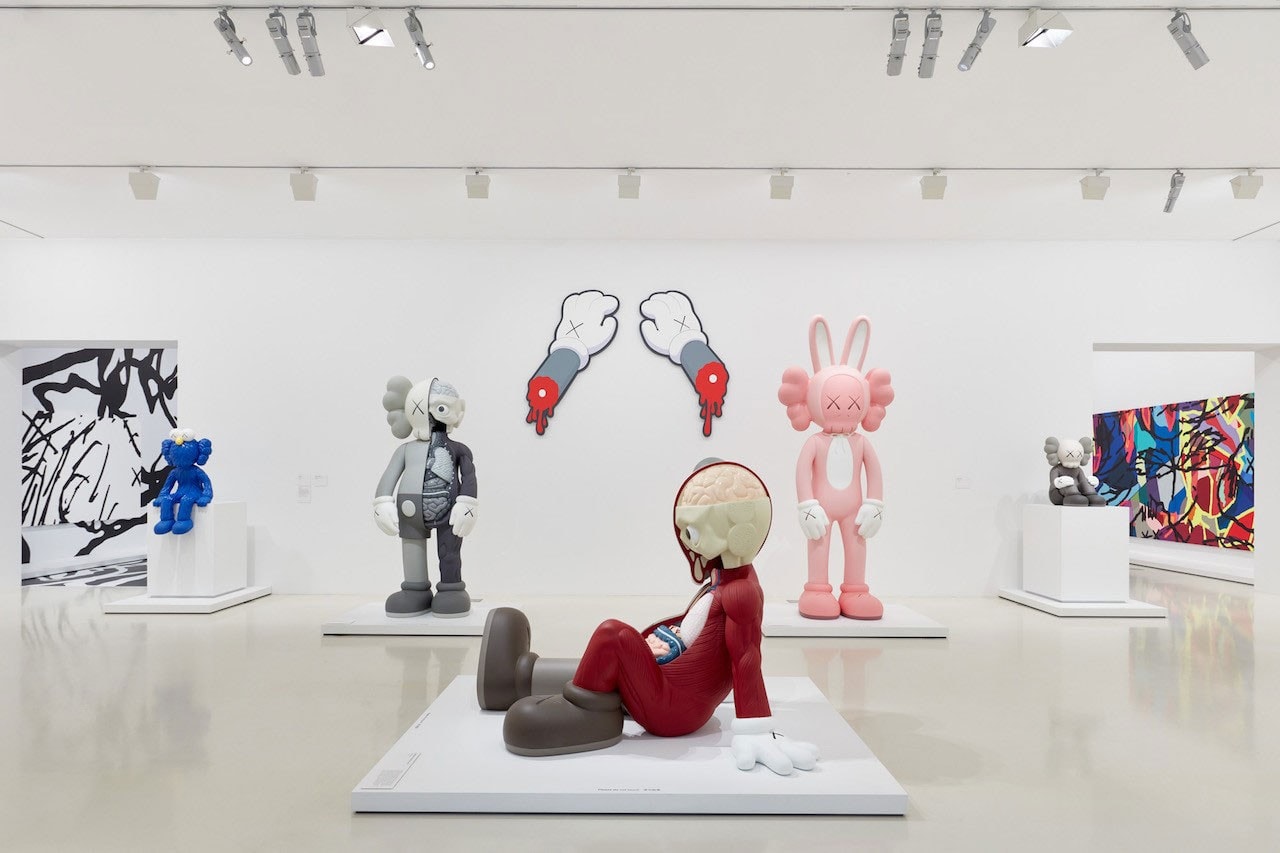
Installation view of KAWS: Companionship in the Age of Loneliness at NGV International, Melbourne 20 September 19 – 13 April 2020.© Tom Ross
Being in the physical presence of an artwork allows the viewer to fully comprehend the art in its full glory, accounting for its scale, vividness, dynamicity, ambience and every other component that embodies an artwork’s atmospheric experience. It is this experience that bridges a personal and intimate connection between the collector and the art that is, hopefully, compelling enough for them to buy it.
With large-scale artworks, such as Takashi Murakami’s The 500 Arhats (2015) and Andy Warhol’s The Last Supper (1986), a lot in their appeal and what makes these artworks so impressive is how massive and engulfing these artworks are. Specifically, with The 500 Arhats, the 100-meter long painting aims to tell a story through its psychedelic and overwhelmingly elaborate imagery. If seen virtually, viewers would neglect impeccable details, like the dynamicity of how Murakami overlays colors and the intricacy of his illustrations. This example illustrates the importance of physically viewing artwork as it allows you to wholly experience its ambience and presence and visualize it in your own space. Moreover, in terms of senses, virtual technologies can only stimulate sight and hearing, therefore, can’t afford sensory-dependent artworks that involve touch, smell and even taste in its aesthetic embodiment.
Final Thoughts & Conclusion
Although, the fusion of art and technology has birthed convenience, appeal and accessibility, “there’s still a long way to go before they truly rival live auction in terms of prestige and total sale values achieved,” as Chiao remarks.
As of now, virtualizations are more of an accessory to its traditional counterparts rather than a tool in itself to exhibit artworks. And ultimately, virtualizations of art spaces are all modeled after physical ones, enforcing the proposition that it is already the best way to exhibit art for appreciation, which always precedes consumption.
Art is made to be seen and experienced live; it has the potential to be something incredibly personal and intimate. Until the day virtual technologies can truly mimic life-like imagery and provide spatial context, physical galleries and art fairs will reign as the best ways to showcase art. Virtual galleries do not suffice in supporting a wholehearted appreciation nor in commending the true artistic and cultural value of art.



